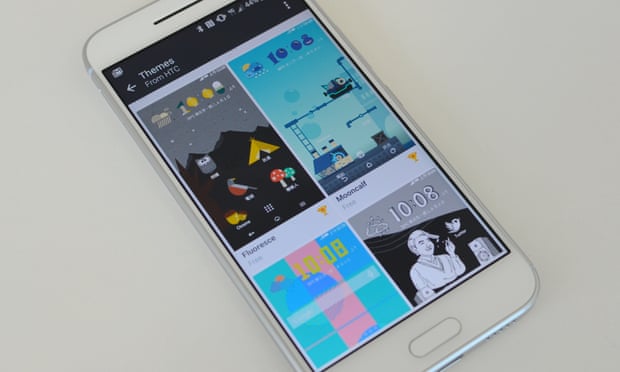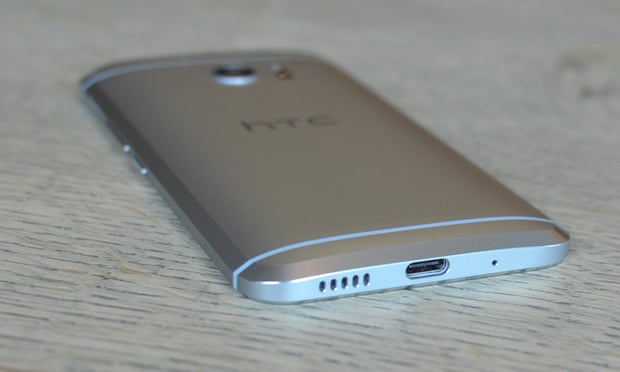The HTC 10 is the best all-round smartphone the Taiwanese firm has made, but it lacks the beauty of some of the its previous top-end handsets. Photograph: Samuel Gibbs for the Guardian
HTC, once a smartphone champion, has been struggling in recent years at the top end with handsets that have just missed the mark. But celebrating its 10anniversary of smartphones manufacturing, has Taiwanese company finally cracked it with the HTC 10?
The back of the 10 resembles HTC’s recent top-end phones, with a curved aluminium body and tapered edges that shrink from 9mm to 3mm, making the device feel thinner than it is. The front is all glass, with a fingerprint sensor at the bottom and a relatively large selfie camera at the top.
Gone are the front-facing speakers and the HTC logo of the One M7, 8 and 9; instead the fingerprint scanner acts as a home button and is flanked by a captive back and multitasking app switcher buttons.
The HTC 10 is 9mm thick at its deepest point and weighs 161g, which is both thick and heavy compared to the competition. The Google Nexus 5X and Samsung Galaxy S7 are both 7.9mm thick and weigh 136g and 152g respectively. It feels solid and well made, but lacks the luxurious feel of the metal used on the One M8.
The 5.2in quad HD LCD screen is crisp and bright, but not quite as vibrant as the OLED display fitted to the Samsung Galaxy S7.
Specifications
- Screen: 5.2in full quad HD LCD (564ppi)
- Processor: Quad-core Qualcomm Snapdragon 820
- RAM: 4GB of RAM
- Storage: 32GB + microSD card
- Operating system: Android 6.0 with HTC Sense
- Camera: 12MP UltraPixel 2 with OIS, 5MP front-facing with OIS
- Connectivity: LTE, Wi-Fiac, NFC, Bluetooth 4.2, USB-C and GPS
- Dimensions: 145.9 x 71.9 x 9mm
- Weight: 161g
The bottom has a USB-C port for charging and syncing and the ‘bass’ speaker that forms the new BoomSound system with the tweeter at the top of the phone. Photograph: Samuel Gibbs for the Guardian
The HTC 10 has Qualcomm’s latest top-end processor, the Snapdragon 820, which is one of the most powerful available at the moment. It handled graphically intensive games, image manipulation and everything else without skipping a beat. The smartphone also has 4GB of RAM, which aided multitasking and coped with having 15 tabs open in Chrome and a load of other apps running in the background just fine.
The phone got hot while downloading apps, but generally ran a lot cooler than last year’s smartphones using the Qualcomm Snapdragon 810 processor. The HTC 10 will be able to handle anything you can throw at it.
Battery life was good, but not great. It would last around 32 hours between charges, using it as my primary device, receiving hundreds of emails, push notifications and messages, browsing and using apps for around three hours, listening to music with Bluetooth headphones for four hours and the occasional spot of gaming or photography.
Quick charge support means a full charge takes just over an hour with the right charger.


